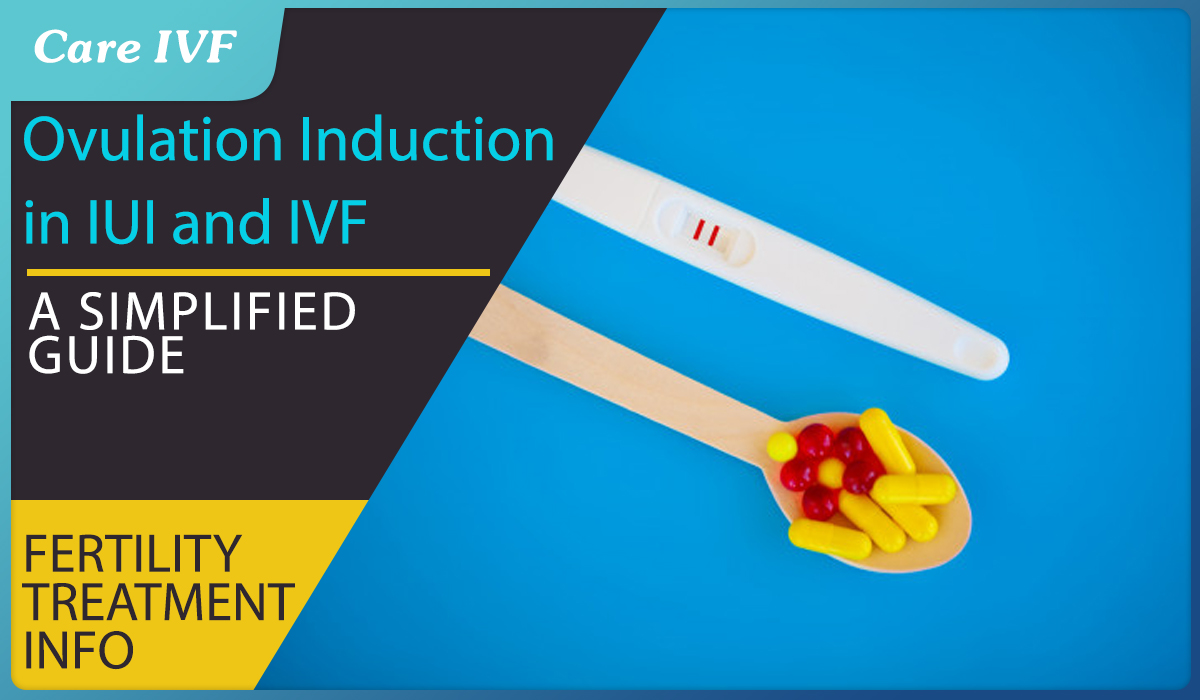

Basic principles of Ovulation Induction in IUI and IVF
Ovulation Induction…is it needed for IUI and IVF Programme?
Most couples seeking fertility treatment want their plan to be as simple as possible.
For decades now the typical entry level of fertility treatment for a variety of underlying conditions has been ovulation induction (OI) with intrauterine insemination (IUI).
The goal of these combined treatments is simple; cautiously enhance the number of fertile eggs a woman produces and then optimally time the exposure of these eggs to healthy sperm.
Thus, OI is the use of medication (Example: clomiphene citrate, letrozole) –under carefully monitored conditions- to boost the ability of a woman’s ovaries to produce more than one egg per reproductive cycle.
The culmination of the ovulation induction is typically followed by the use of medication to trigger egg release and then trailed by an IUI( the processing of a sperm specimen by laboratory technicians to optimize the sperm quality and the placement of the specimen by a healthcare provider into the woman’s uterus)
Ovulation induction in IUI protocols can be a treatment option to consider if any of the following exist :
- Infertility due to ovulation problems
- Unexplained ( or unspecified ) infertility
- Mild male factor infertility
Candidates for Ovulation Induction:
- Many women are candidates for ovulation induction. Women who ovulate infrequently or who do not ovulate at all are most benefitted by undergoing ovulation induction through different fertility drugs depending upon their exact etiology for having ovulation difficulty.
- Women with unexplained infertility who ovulate regularly can also be treated with ovulation induction to increase the number of ovulations pr cycle to give them better odds in achieving a conception.
- Ovulation Induction is also used for patients undergoing an IVF cycle to maximize the egg production.
- The probabilities of complications such as the Ovarian Hyperstimulation the gonadotropins Syndrome( OHSS) are minimized when patients are monitored carefully.
Let’s look into the Ovulation Induction medicines….
Clomiphene Citrate
- Clomiphene citrate is usually given orally for 5 days of a cycle starting with a 50 or 100mg/day. If ovulation fails to occur, the dose of clomiphene citrate can be increased by 50 mg more.
- Clomiphene Citrate works by “tricking” the body in thinking that the women does not have enough estrogens. The pituitary gland at the base of the brain sends signals to the ovary to stimulate follicle development and egg maturation after getting impulses from higher centres in the brain.
- The chance of success with clomiphene citrate depends on many factors, such as the age of the patient, associated fertility problems and semen parameters.
Letrozole
- Women who have the same indications as for ovulation with clomid can also use letrozole as an alternative.
- Women who have side effects with clomiphene citrate can consider letrozole as an alternative.
- It is taken for 5 days early in the cycle. The starting dose is 2.5 or 5.0 mg.
Gonadotropins
- The gonadotropins are injectable fertility medications that can be used for ovulation induction.
- Gonadotropins given during IVF stimulation are daily injections taken for 5-12 days.
- These injections allow eggs within follicles to mature.
- The starting dose varies from patient to patient in order to optimize the likelihood of conceiving while reducing the risk of multiple births and OHSS.
- The patient is monitored carefully with ultrasounds and hormonal evaluation to adjust dosing
- For patients undergoing IVF, gonadotrophins produce a large number of mature follicles.
Gonadotrophins Releasing Hormone (GnRH) Analogs
- GnRH analogs, are synthetic hormones similar to GnRH.
- GnRH is released by the hypothalamus in the brain to control the pituitary gland.
- Normally a pulsatile release of GnRH stimulates the pituitary to secrete FSH and LH, the hormones needed to cause egg production and subsequent ovulation.
- When a synthetic GnRH analog is given, the opposite effect occurs.
- The use of GnRH analogs in conjunction with gonadotrophins allows for better hormonal control of ovulation induction and fewer canceled cycles.
- In IVF cycles, GnRH analogs are often used to enhance egg production and to prevent spontaneous ovulation.
- The GnRH analogs can sometimes be used for patients undergoing non IVF ovulation induction cycles.
Human Chorionic Gonadotropin(HCG)
- HCG is used to induce ovulation customarily when they are an adequate number of mature follicles respectively per treatment regime.
- It can be used in lieu of waiting for a spontaneous LH surge and IUI and egg retrieval can be timed accordingly.
- LH and HCG bind to the same receptor.
- The HCG is used because it has a longer half life than LH.
Article Tags
About the author

Leave a Comment